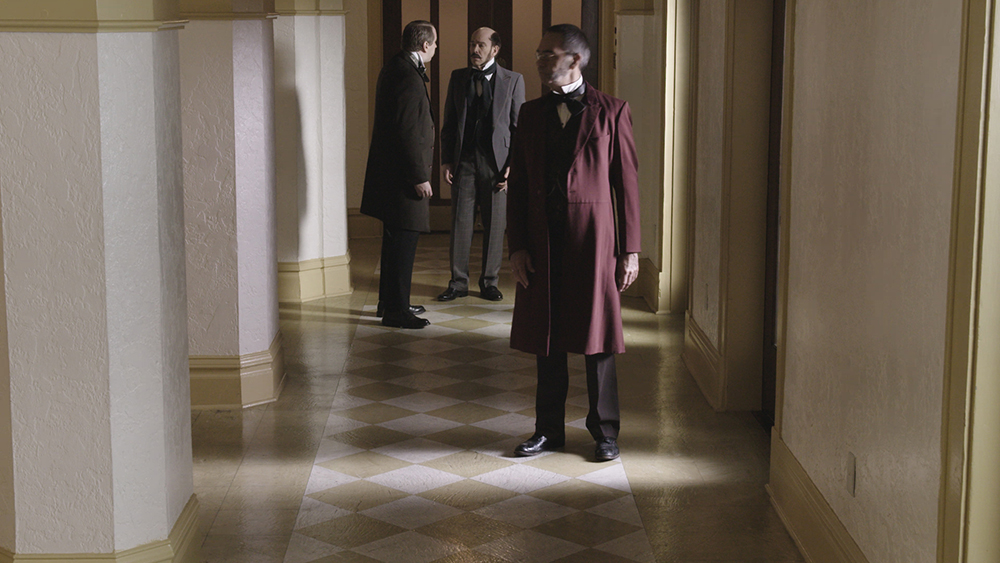Note: Because the documentary is still in production, I will only be posting still images from the camera and not video. The color correction presented in the still images is not the final color pass.
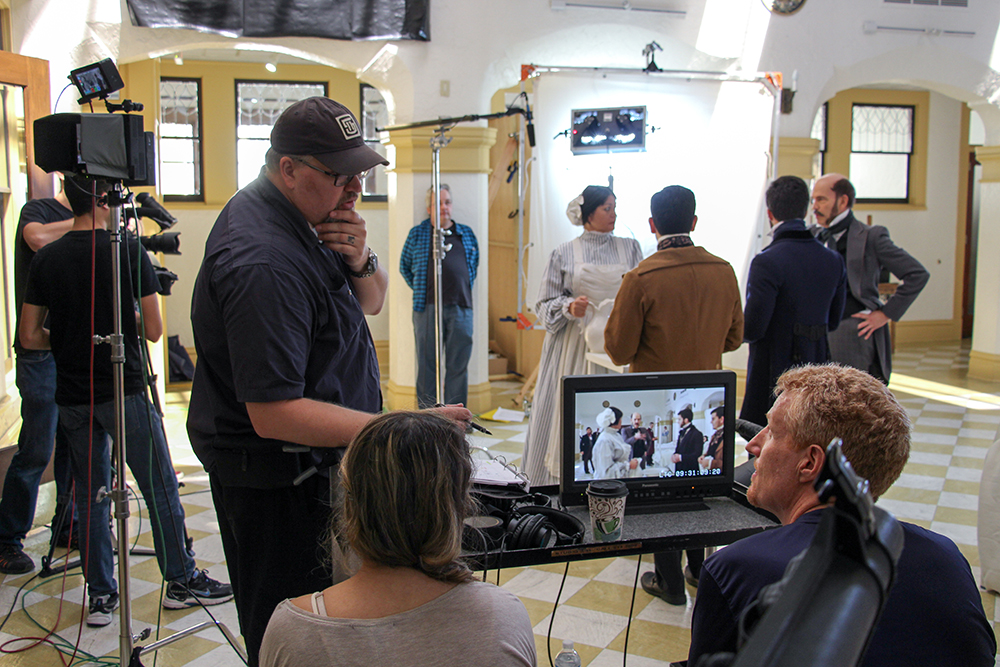
Recently Studio 601 was involved in shooting a dramatization for a documentary. The scenes take place in the 1850’s. The production was shot on location at the Thomas Center in Gainesville, Florida. This was our first shoot using the Sony FS7. We shot in 1920X1080 except for two close-up shots in UHD 4K 3840X2160.
The reason we did these two shots in 4K is we knew we wanted to digitally zoom them in post. I will not get to deep into the camera settings and how they function, but I will discuss the settings I used and what I thought about them.
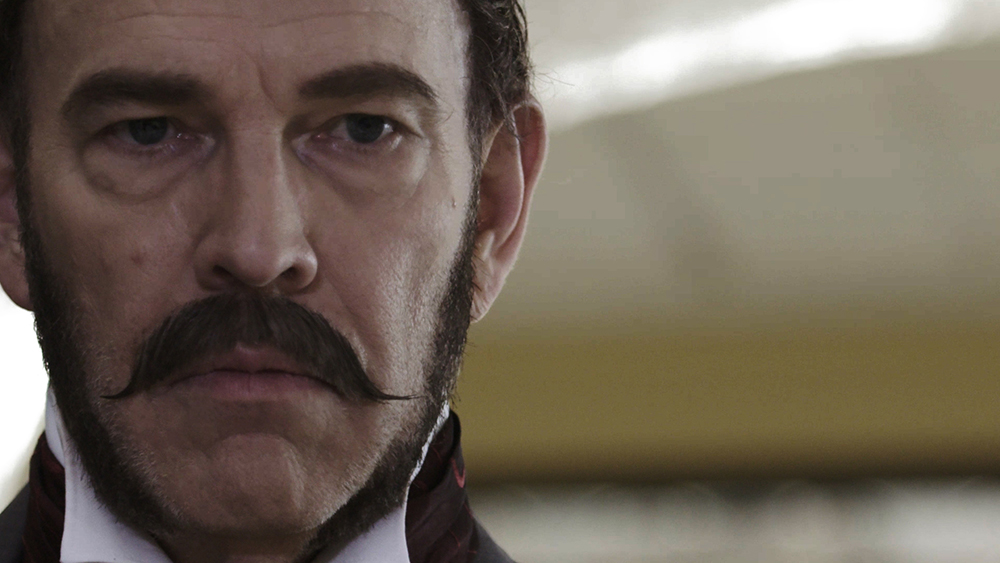
4K corrected and cropped.
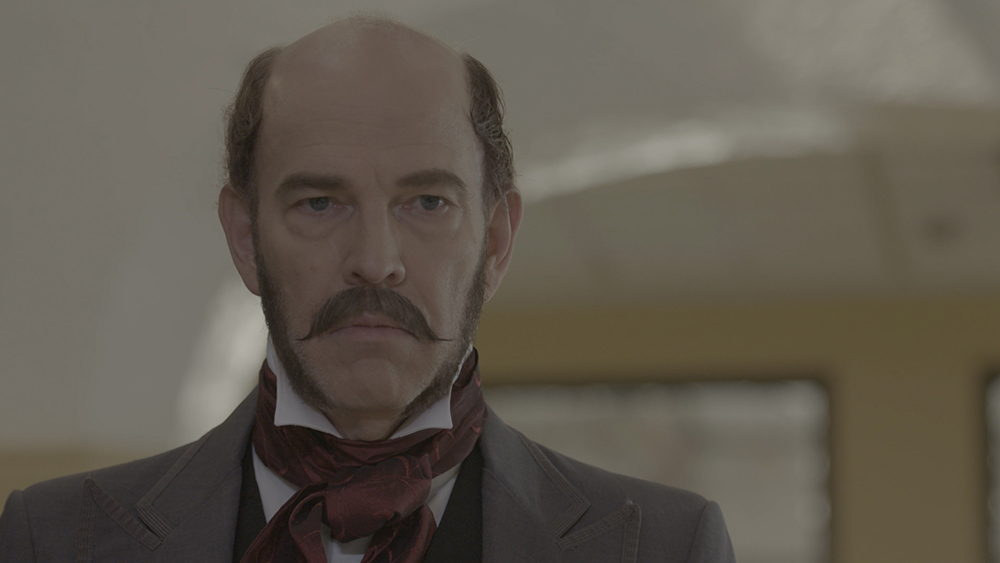
4K uncorrected, full frame.
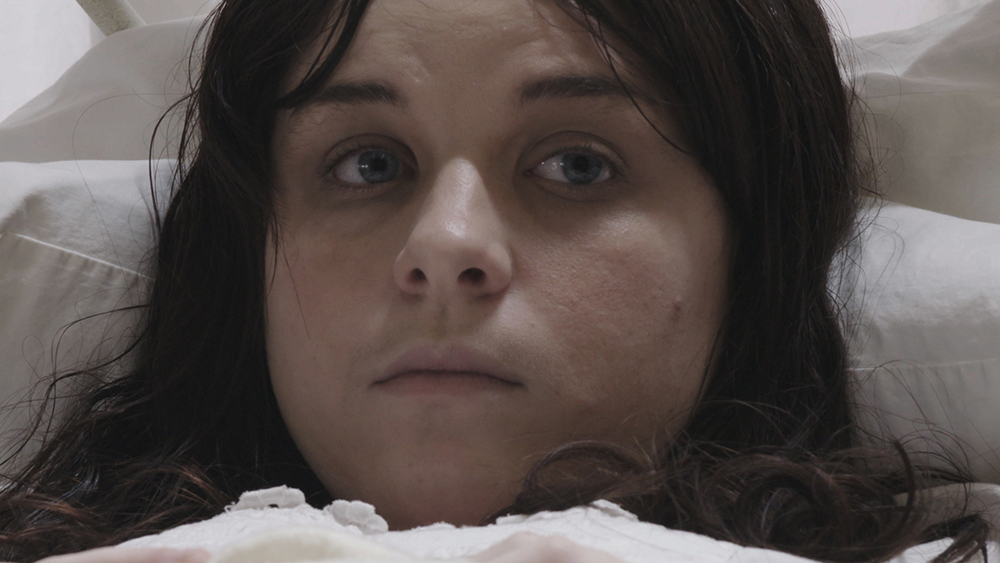
4K corrected and cropped.
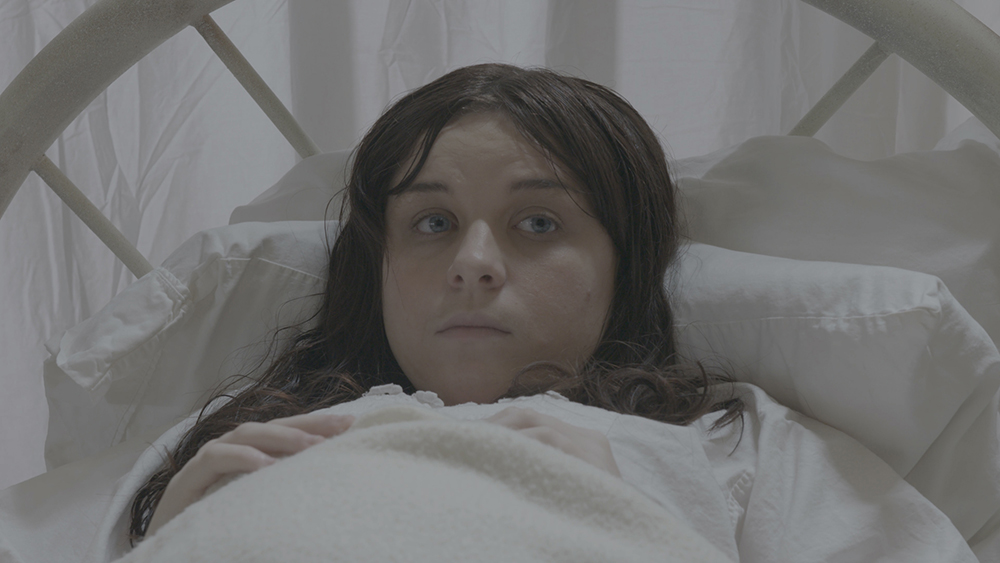
4K uncorrected, full frame.
For a great resource on the FS7 go to: http://www.xdcam-user.com/2014/12/ultimate-guide-for-cine-ei-on-the-sony-pxw-fs7/
By Alister Chapman, (no relation)
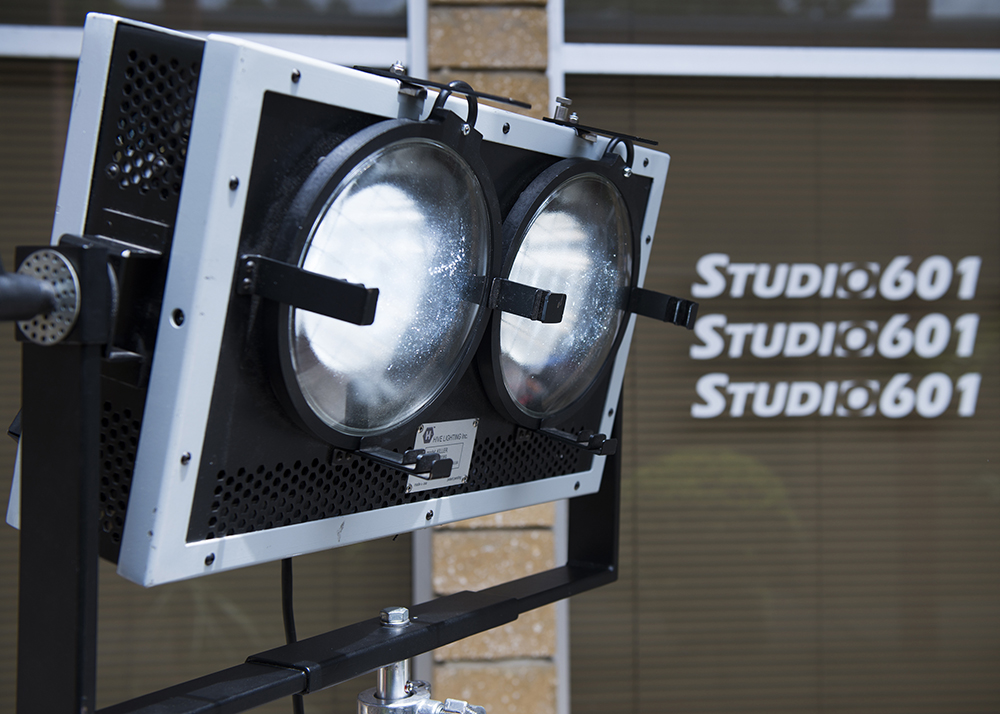
The Hive Lighting, Plasma Maxi Par was a nice big source of light. Its primary configuration throughout the day was bouncing it into a 6X6 muslin. For one scene we shot it through a doorway replicating sunlight.
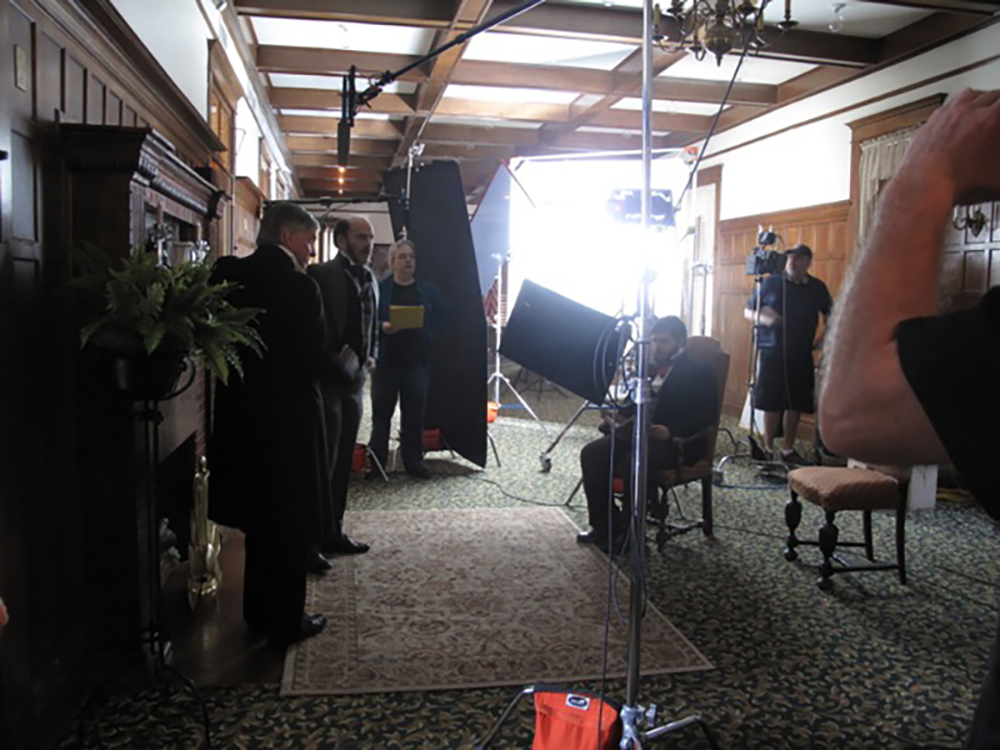
The shoot was done over the course of one day, which was nuts considering what we were doing. The crew consisted of camera operator Nicholas Cravey, gaffer Shawn Robinson, key & dolly grip Cody Allen, and myself, Travis Chapman serving as director of photography. We were using Nikon glass:
14-24mm 2.8
24-70mm 2.8
70-200mm 2.8
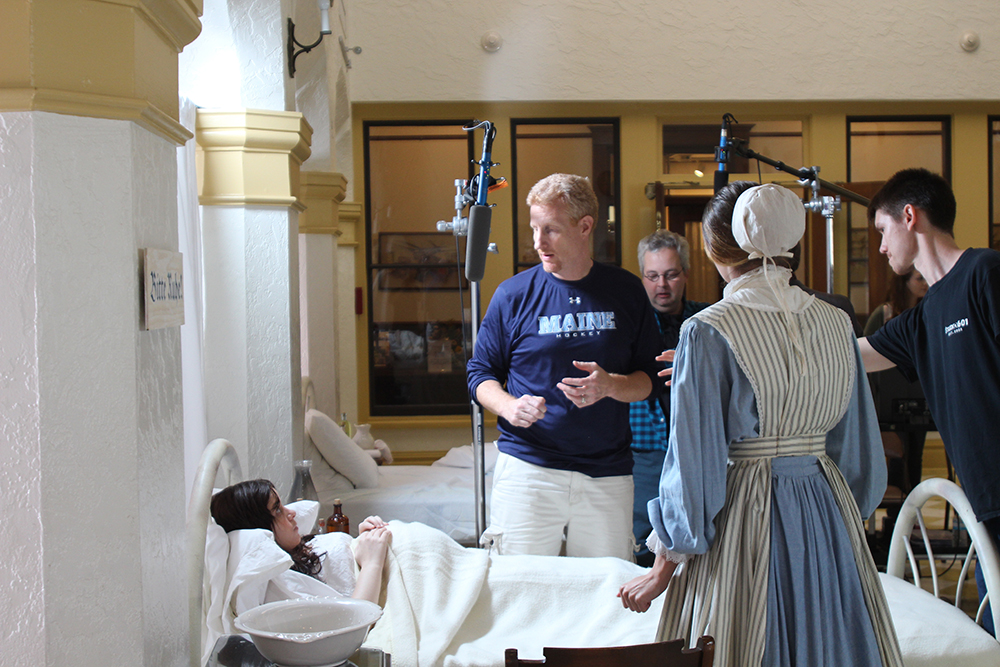
Working through the scene with the actors.
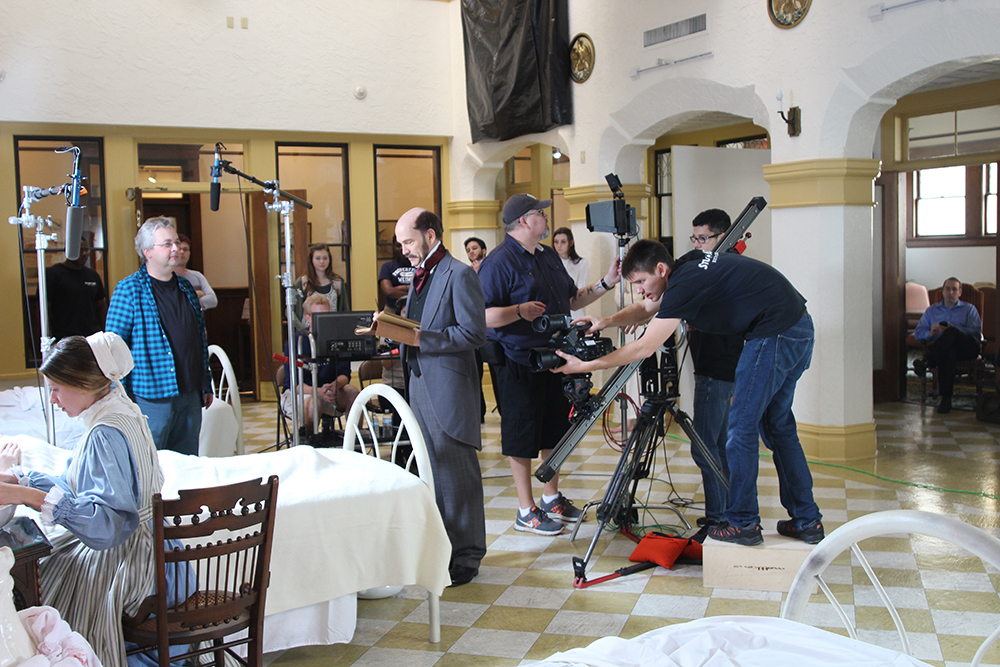
With the Sony FS7 we shot the entire dramatization in Cine EI mode, at 2000 ISO and S-Log3 . Depending on the shot we were between a 2.8 and 5.6 f-stop. A couple of the wider shots might have been closed down a few more stops. I have found with the S-Log3 that for certain shots we had a lot of latitude in post to boost the signal without any significant boost in noise. During tests we did for one scene involving candlelight we saw noise, and during the shoot attempted to increase the overall signal coming to the camera. In post we could adjust in down with less noise.
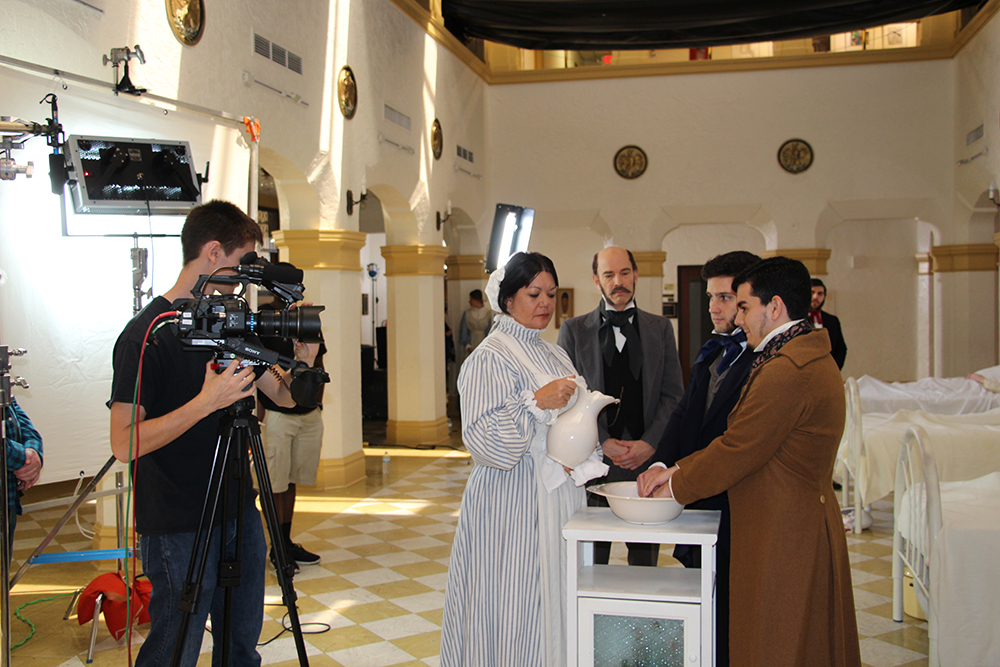
Camera Operator Nick Cravey lining up a shot.
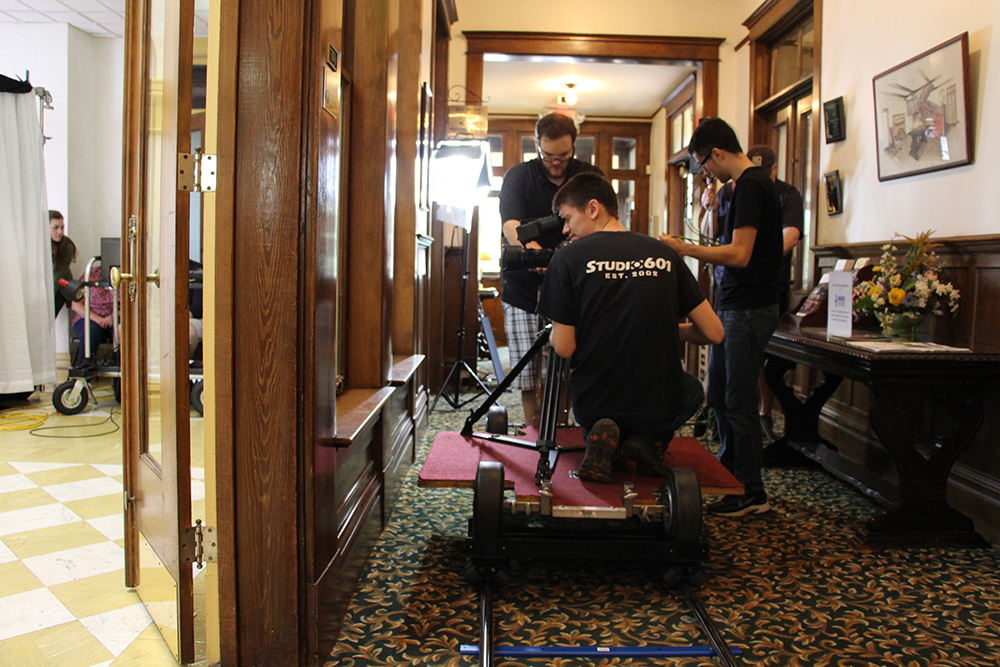
Nick Cravey on the dolly with Dolly Grip Cody Allen.
This shoot had two interesting challenges. The first was the main area we were shooting in. The entire ceiling was a skylight. That presented a couple of issues with the lighting. First, we had inconsistent light, clouds passing or sun blasting through the skylight. Second, having that much overhead light made things look very flat.
The second challenge was a night scene, involving candlelight. I spent quite a bit of time researching this, and came up with a solution that was a hybrid of ideas I found on-line.
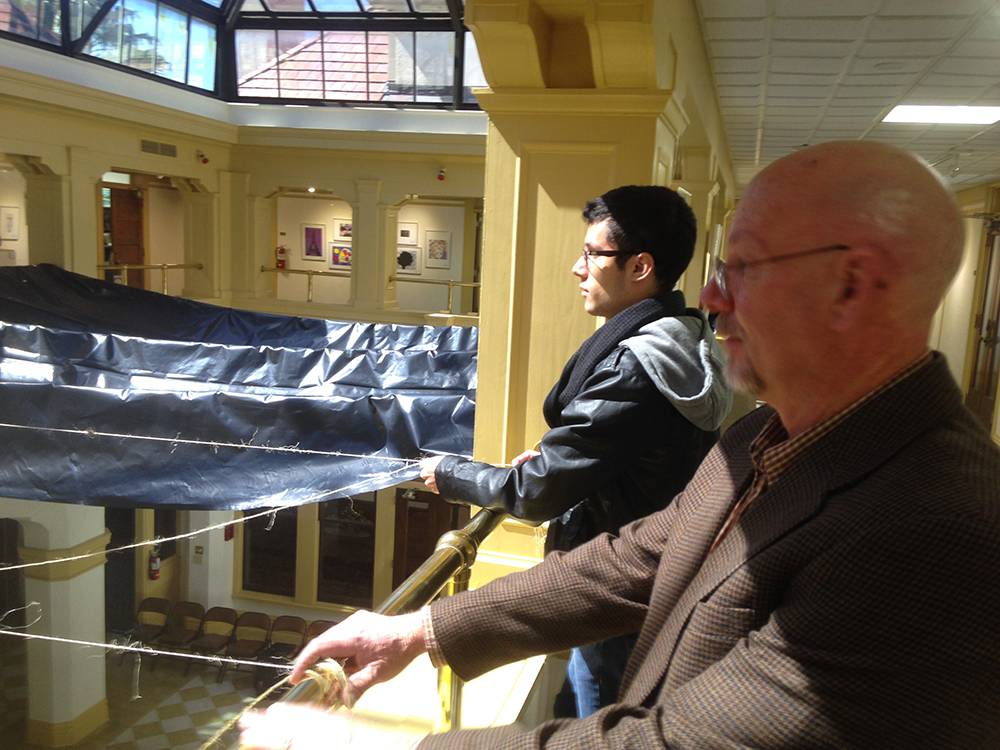
Testing the black plastic idea with Pete ‘the Meat’ Forest.
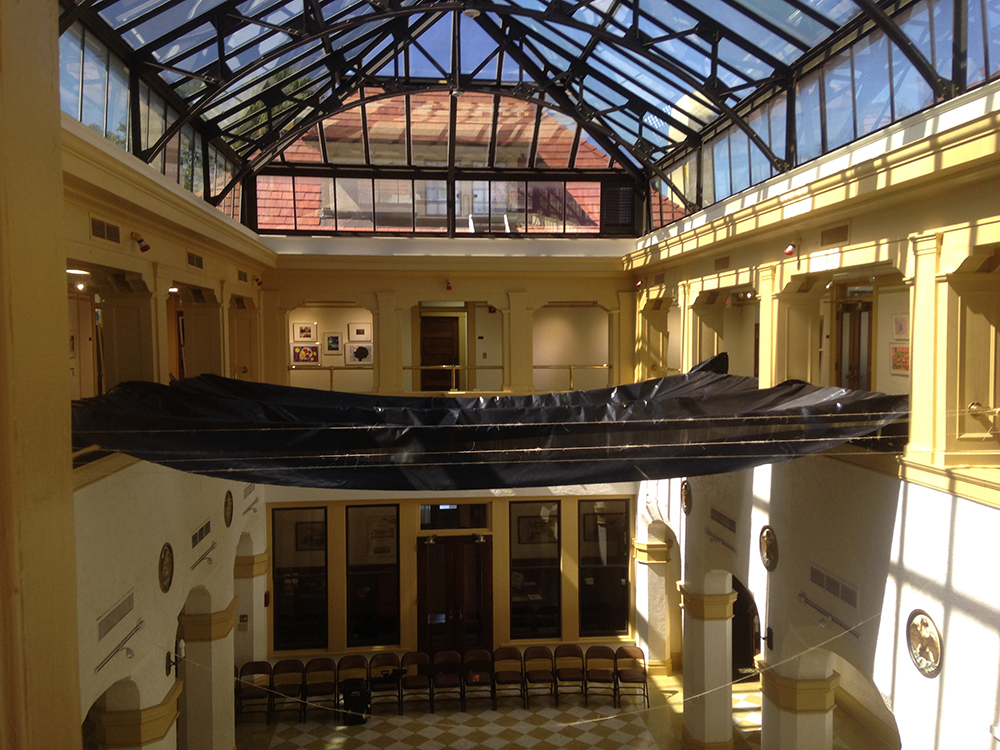
When it came to addressing the skylight we were dealing with a two-story structure. There was no way we were going to gel all those windows. With one of our wide shots, there was no way that we could control all that natural light with flags or floppies. So our solution was to rig black plastic across the second floor. We did it in 8 foot widths to still allow some natural light to peak through. If we felt we need more natural light we’d adjust the strips of plastic.
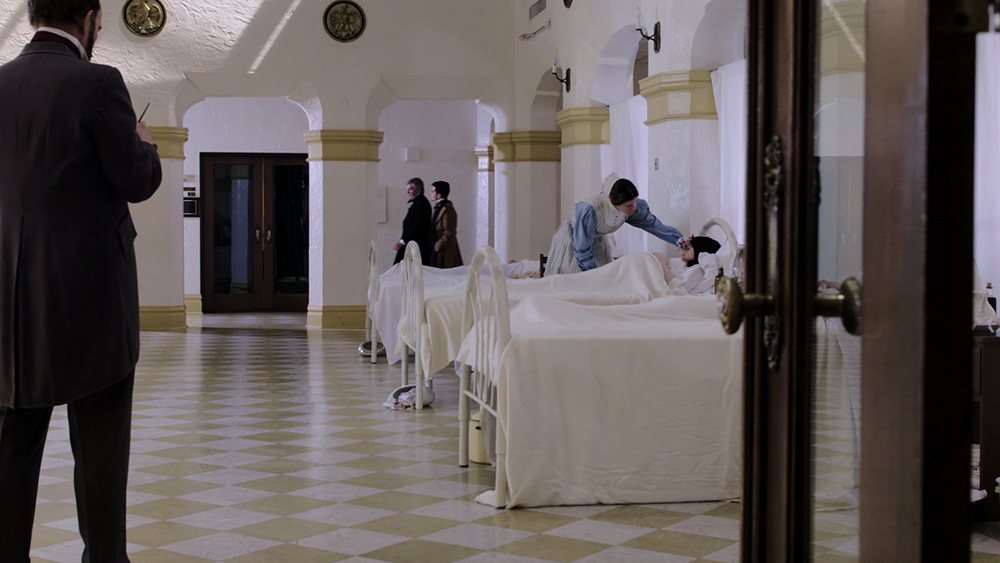
Corrected.
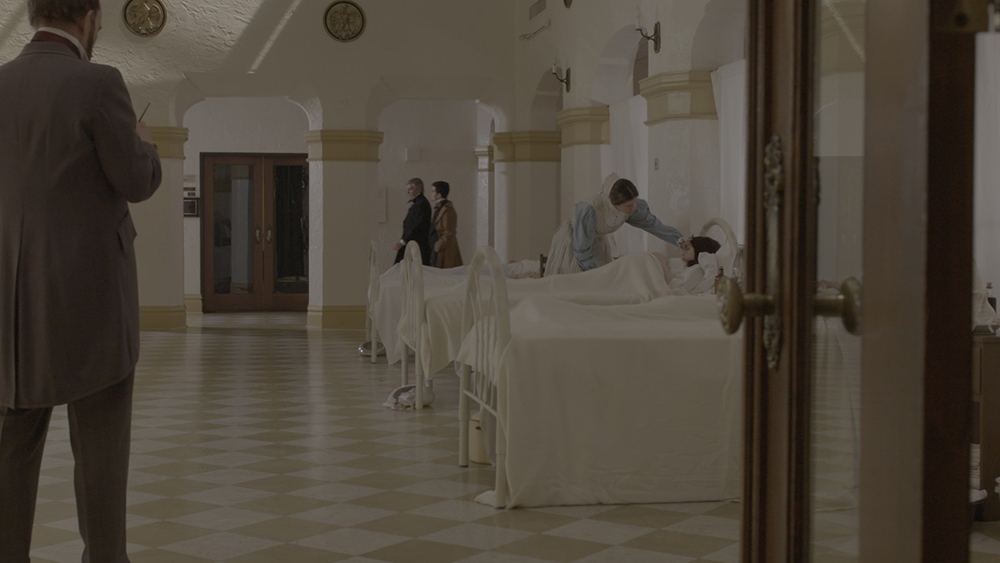
Uncorrected.
One serendipitous moment that occurred on set was when one of our actors had to leave early and we had to change our schedule around. That pushed back our big wide shot by an hour or so. In doing that the shafts of light you see are the sun. Once we finished the wide shot, the shafts were gone. So sometimes a shift in things can be a blessing.
When it comes to the candle light scene I looked up several ways to replicate candle light. I primarily focused on Shane Hurlbut’s article on his Medusa rig.
https://www.hurlbutvisuals.com/blog/2012/07/building-medusa-the-perfect-diy-fire-light/
I realized his rig was a bit overwhelming to construct in the time we had. Though I saw how his unit was operated and I combined that with using gelled Christmas lights. We had 2 grips on set running 3 dimmers to create the effect. The Christmas lights we NOT LED’s. My personal feeling is the traditional Christmas lights have a warmer tone than even the warmer LED lights. So one set we left open, one had a ½ CTO loosely wrapped around it, and the other set had a Rosco 11(light straw). Depending on the position of the camera we hung them from a c-stand arm or stuffed them in the front of the desk.
Another issue was being able to shoot our actor straight on. Because the location was a museum we had limits on what could be moved. So my camera operator, Nicholas Cravey came up with the idea of shooting into a mirror and reversing it in post. We did a few tests, and it worked really well.
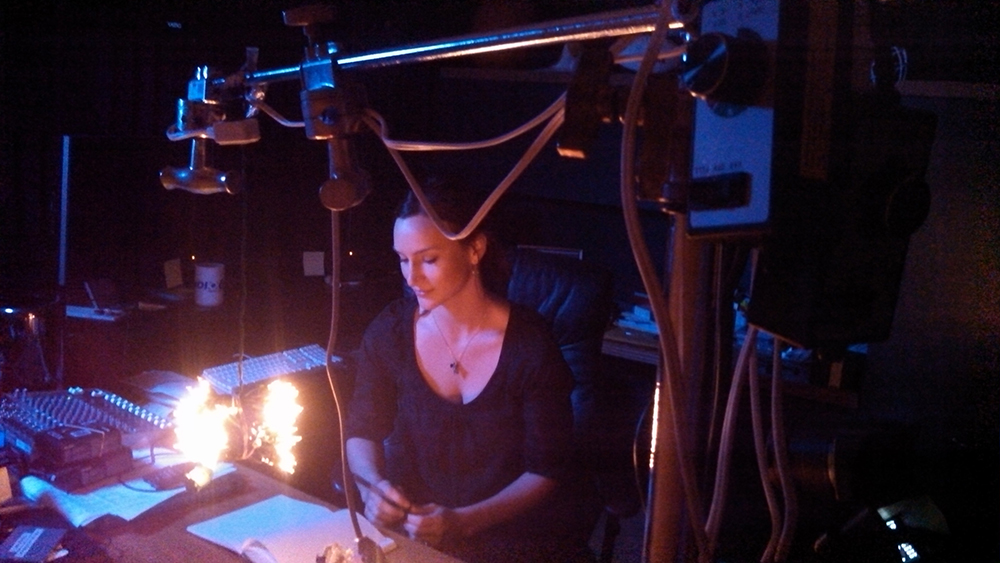
First test for lighting and mirror.
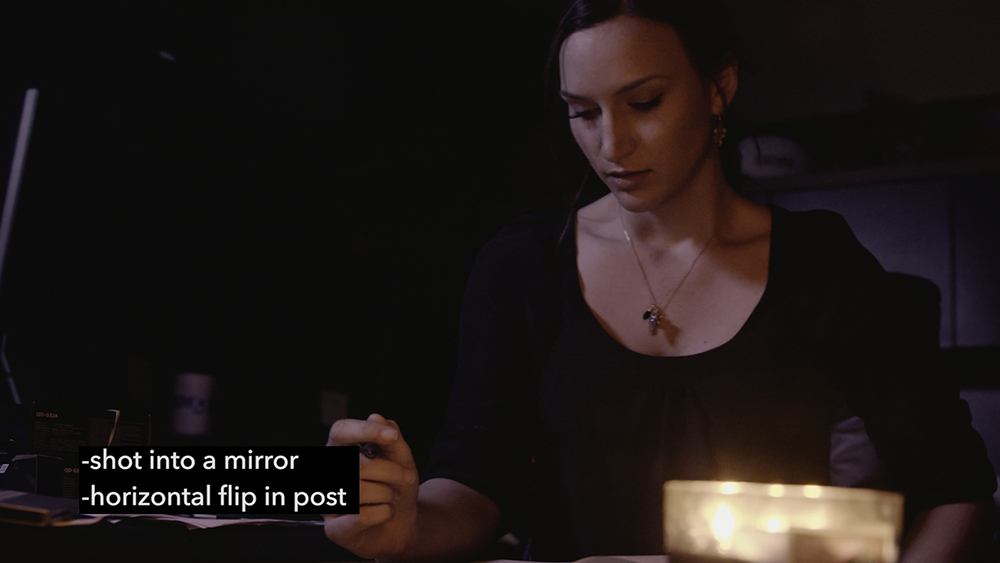
Test shot corrected.
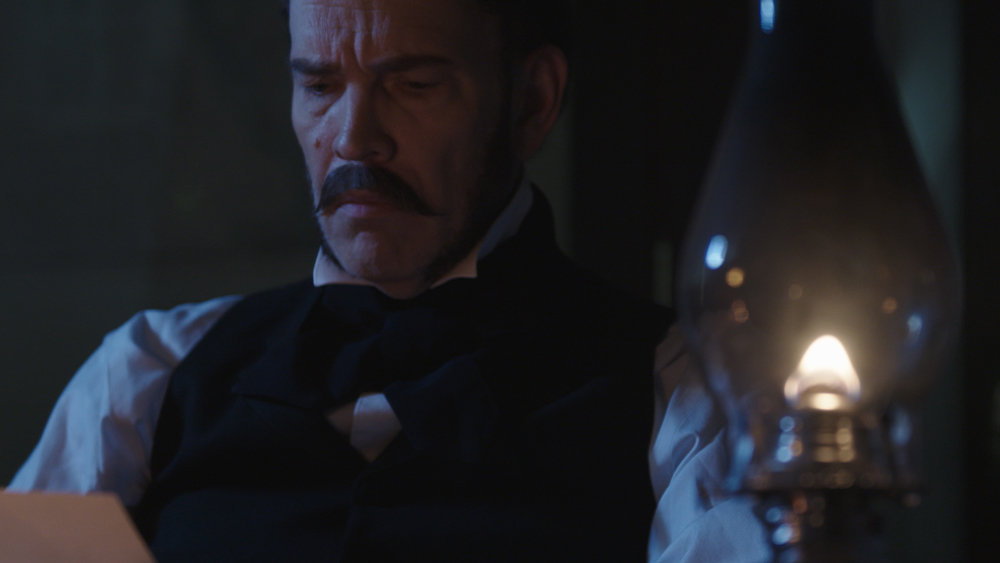
Actual shot corrected.
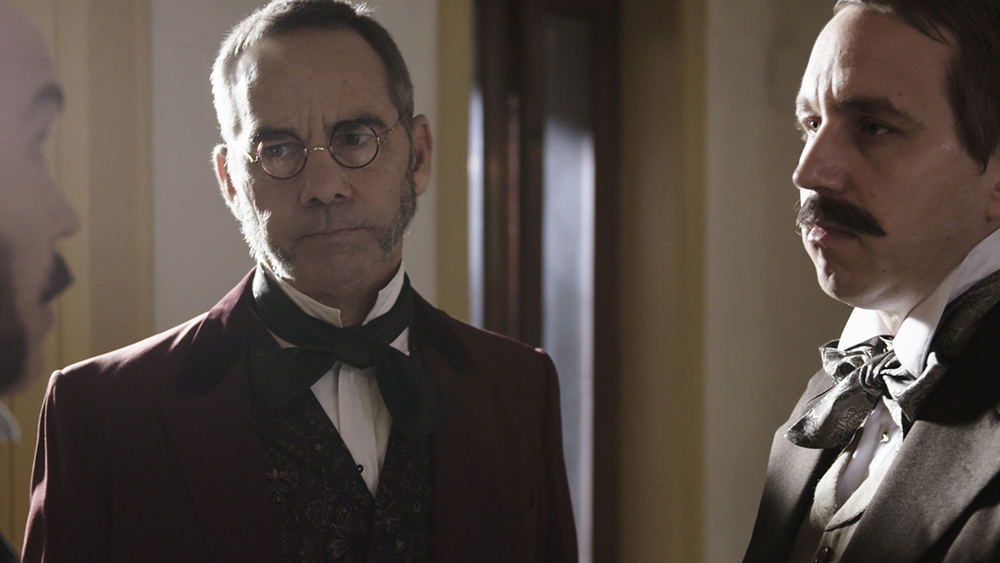
The latitude you have at 2000ISO, carried over into post is pretty amazing. We had been using the FS700 for the last couple years, and I feel this is the next evolution in that camera. Like anything out there, there are some great improvements and some things that make you scratch your head. Like why put the headphone volume adjustment in a menu setting? At the very least make it one of the assignable rollers.
I feel the FS7 is a powerful camera for the money.
